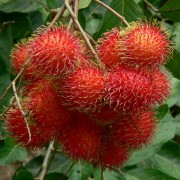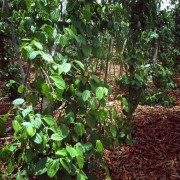Creating Sustainable and Resilient Rural Livelihoods
Two hectares of land planted with Inga alley cropping can easily provide lifelong food security for a family, ending dependence on the destructive and high risk strategy of slash and burn. Food security, with good harvests year after year from the same piece of land, can seem almost miraculous after generations of slash and burn farming, where land can be relied upon to provide a good harvest for just 2 or 3 years at best.
Hence, food security is our number one concern and our first priority with each family that enters the project. However, food security alone isn’t everything. Food security can’t buy new shoes or clothes, nor can it pay for school books or cover medical bills. After putting food on the table, the next thing families look for is a way to make enough money to be sure that should a child fall ill, they will be able to provide the medical care needed to stave off disaster. For campesino families, generating this income means producing not only basic food crops but cash crops as well.
And ideally that’s cash crops, plural, since farming being by nature a risky business; it’s never a good idea to put all the eggs in one basket. The greater the diversity of crops produced on the farm, the greater the certainty that come rain or shine, flood or drought, families will still be able to make a decent income from year to year. With climate change making weather patterns increasingly erratic in Honduras, such diversity, and the resilience it provides, is now more important than ever.
Therefore, with the aim of providing a complete and sustainable livelihood, we are offering all the families we work with the opportunity to plant a variety of cash crops.
- Alongside Inga alley cropping, we are also helping families plant cacao orchards with Inga as a shade tree.
- Mahogany Seedlings for Reforestation
For starters, there are a number of cash crops which grow beautifully in the fertile soils provided by Inga alley cropping, such as pepper spice, pineapple, passion fruit and chilli tabasco to name but a few. As well as technical advice and support with these crops, we are also offering each family the opportunity to plant 1 or 2 hectares of fruit trees. Over the last few weeks we have begun working with families from several communities planting cocoa and rambutan (a cousin of the better known lychee), both of which are in strong demand in Honduras. Other tree crops we are planning to begin offering soon include limon persa and avocado.
Aside from this, we are supporting families to reforest their land, hence the 40,000 rainforest tree seedling we currently have in our tree nursery, which we are distributing between the interested families. Since Inga alley cropping is much more efficient than slash and burn, it drastically reduces the amount of land families need to cultivate, freeing up significant amounts of land for reforestation. We are therefore helping the families that wish to, to reforest this land with native rainforest species. The trees we are helping families plant are all high value timber trees, hence families will be able to manage the reforested land, harvesting and replanting trees in order to provide a long-term and sustainable source of income. For campesino families, having timber trees on the farm is equivalent to, if not better than, a savings account in the bank. It can serve as pension fund or inheritance, while at the same time protecting the farm’s soil and water sources.
All these elements combined, food and cash crops in Inga alleys, fruit trees and reforestation, add up to what we have dubbed our ‘Guama Model’ and are designed to provide a diverse, resilient and effective livelihood strategy that, since it is based in agricultural techniques that protect and improve the land, rather than degrade it, will be good for the long haul. The only compulsory element of the Model is the 1 or 2 hectares of Inga alleys for food security. After that, families can choose which other elements and crops they would prefer. This means the model is highly flexible and can be adapted by each family to fit their individual needs and circumstances.





